This may seem like a very strange problem to have but it’s actually quite common. And no, you’re not going insane! Once you understand why it happens you should be able to make some adjustments to help.
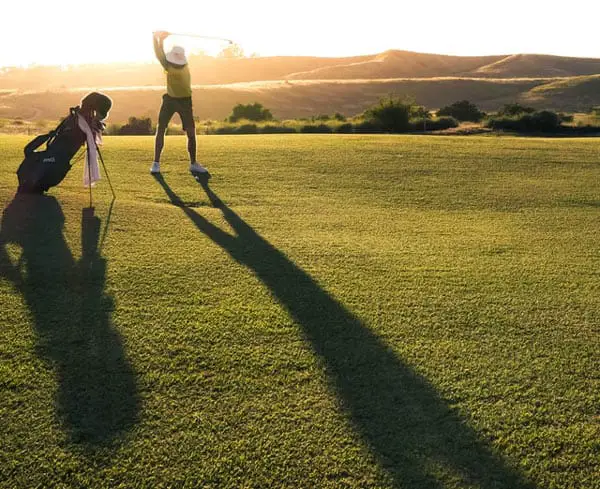
Fortunately, correcting this problem can be as simple as a couple of tweaks at setup. Some people also find it helps to focus on a different feeling during the driver swing.
The main thing to understand is the arc of the golf swing and how ball position can have an affect. For the sake of this discussion, we’ll assume that we have a neutral swing path. In other words, we don’t have a hook swing or a slice swing. Most players who have this problem have a fairly neutral swing path anyway.
To understand this concept, it’s probably best to imagine the swing in three dimensions. Take a look at the drawing below. (You’ll have to excuse my pathetic attempt at artwork!)

As we swing the club through the ball, the club travels downwards (towards the ground) as well as outwards (away from us). After the swing has reached it’s apex (the moment the clubhead is furthest from us), the club starts travelling upwards again (away form the ground) and back towards us.
Try to visualise this, as it is this arc which means many golfers draw their irons and fade their driver.
With that in mind, let’s start by looking at an iron swing of a player with a neutral swing path. Ideally, the golf ball should be struck before the swing bottoms out with an iron. This means the ball can be struck before the ground.
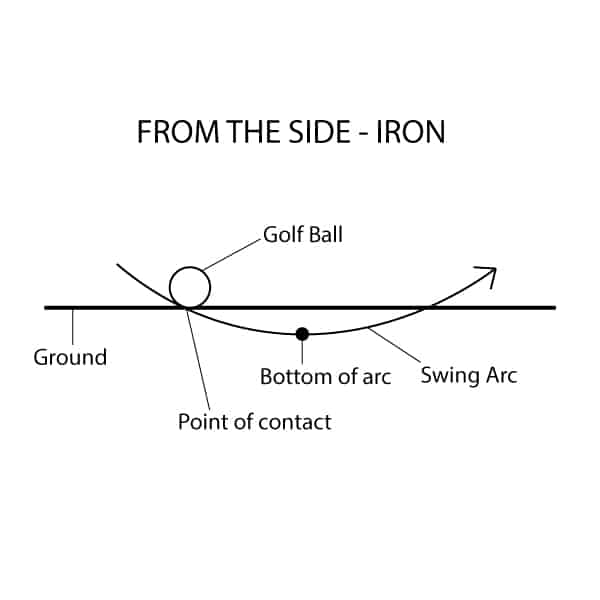
The side effect of this is that the club is still moving away from the player as it strikes the ball. In other words, the club is travelling in-to-out. This produces right-to-left spin on the golf ball, resulting in a draw. The diagram below may help to show this a little better.
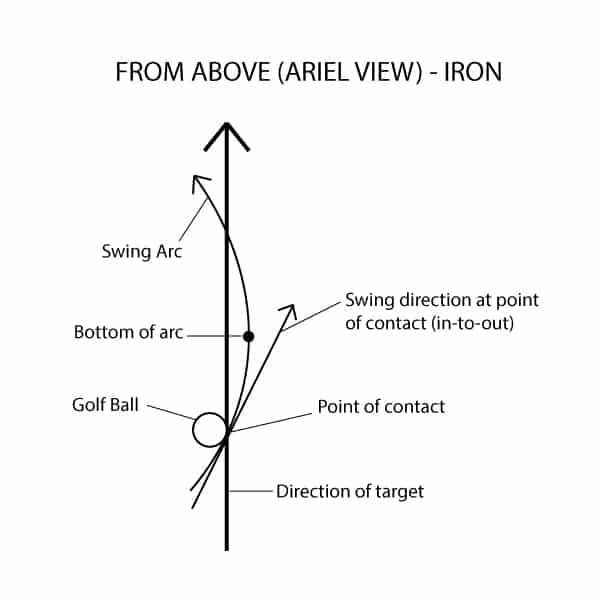
Now let’s take a look at what happens with the exact same swing with a driver. Firstly, the ball position is moved forward since we don’t want to catch the ball on the downswing like we did with the iron. This would produce too much spin, harming disctance and accuracy.
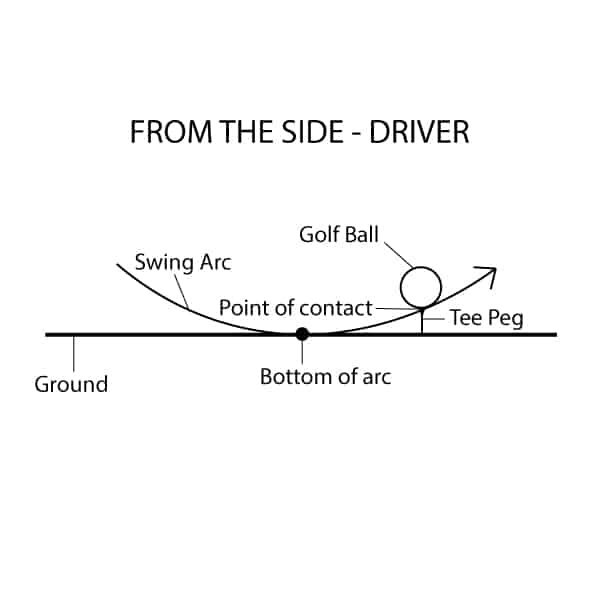
So a forward ball position call help to control the launch and spin but just like with the iron, this change in ball position has a side effect. In this case, the forward position means that the club has passed it’s apex as it makes contact with the ball. At contact, the clubhead is actually moving back towards us. Or, to put it another way, from out-to-in. This causes left-to-right spin to be imparted on the ball, resulting in a fade or a slice.

Hopefully, this can help you to understand how a golfer can hit a draw with an iron and a fade or slice with the driver. The same golf swing can produce completely different results with different clubs.
Well, for many golfers there may not need to be a fix. Once you understand what’s happening you can hopefully realise that you’re not going crazy!
Hitting a draw with irons and a fade with the driver is not necessarily a bad thing. Many golfers assume that hitting a fade with the driver loses distance but this is not always the case. In fact, many of the long drive golfers play a fade!

Having said that, if you’re hitting a slice then you’ll definitely want to make some adjustments. A sliced drive will almost always lose distance, penetration, and consistency.
One of the most simple adjustments you can make is ball position. Moving the ball back in your stance slightly will allow you to strike the ball earlier in the swing. This should mean the club is travelling less out to in (reducing the slice) or even in to out (producing a slight draw).
As a rule of thumb, somewhere inside your left heel is a good placement with the driver. But it still comes down to personal preference, your optimal ball position maybe further back or further forward than this.

Experiment and see what works for you. Unlike old school golf tuition teaches, there is no one size fits all technique – just look at how different the pro’s swings and setups are.
Note: You may want to tee the ball down slightly when practicing moving your driver ball position back a little. This should guard against skying the ball (catching it on the top of the clubface). But don’t tee the ball down much as that may encourage a steep swing. In general, around half the ball should be sitting above the top of the driver.
Also, be careful not to move the ball so far back that you’re coming down steep with the driver. This would likely produce too much backswing and make the shot very difficult to control.
Let’s say you want to hit a draw with the driver. This could be because you are hitting a slice or just because you want to have the shot in your locker.
In order to hit a draw with the driver it requires a completely different swing. As mentioned earlier, if you use the same swing you use with an iron, you will probably produce a fade.

To draw a driver, you need to swing much further out to the right (for a right hander). I like to think of it like trying to curl a soccer ball from right to left, or trying to hit a banana forehand in tennis. You have to swing right of the target with the clubface slightly closed.
But rather than getitng into the technicalities of it, I think the best way to learn is to experiment on the driving range. I find it best to really exaggerate the move until you start hitting some hooks, then you can calm it down.
It will probably help you to stand closed to the target, but it isn’t neccesary. Just try to hook the ball! It’s important to be relaxed and free, and I think it helps to be instinctual. Don’t be afraid to change your setup if you think that will help you to achieve the draw.
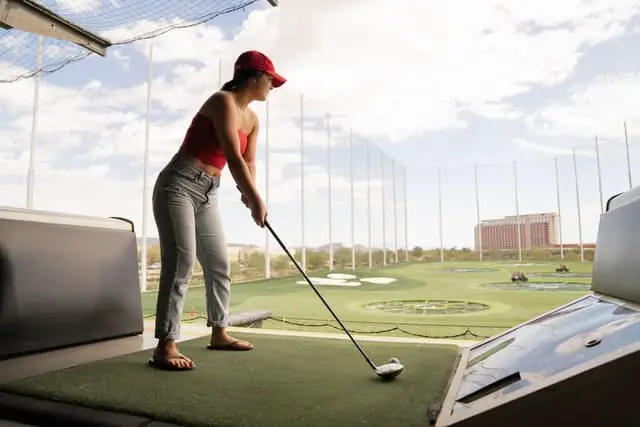
And don’t worry too much about where the ball is going, just have fun and see what happens. See if you can hit some big hooks. Once you get a feel for it, you can start honing it in.
Just remember that to draw a driver, you have to exaggerate the move much more than you would to draw an iron.
Some golfers choose to stand closed with the driver in order to counter the side affects of a forward ball position. At

I’m Tom Rothwell and I’m a 3 handicaper that's obsessed with golf. You can often find me hitting balls on a driving range somewhere!
I'm on a journey to learn as much as possible about the great game. I've made Clean Strike Golf to share everything I discover along the way.